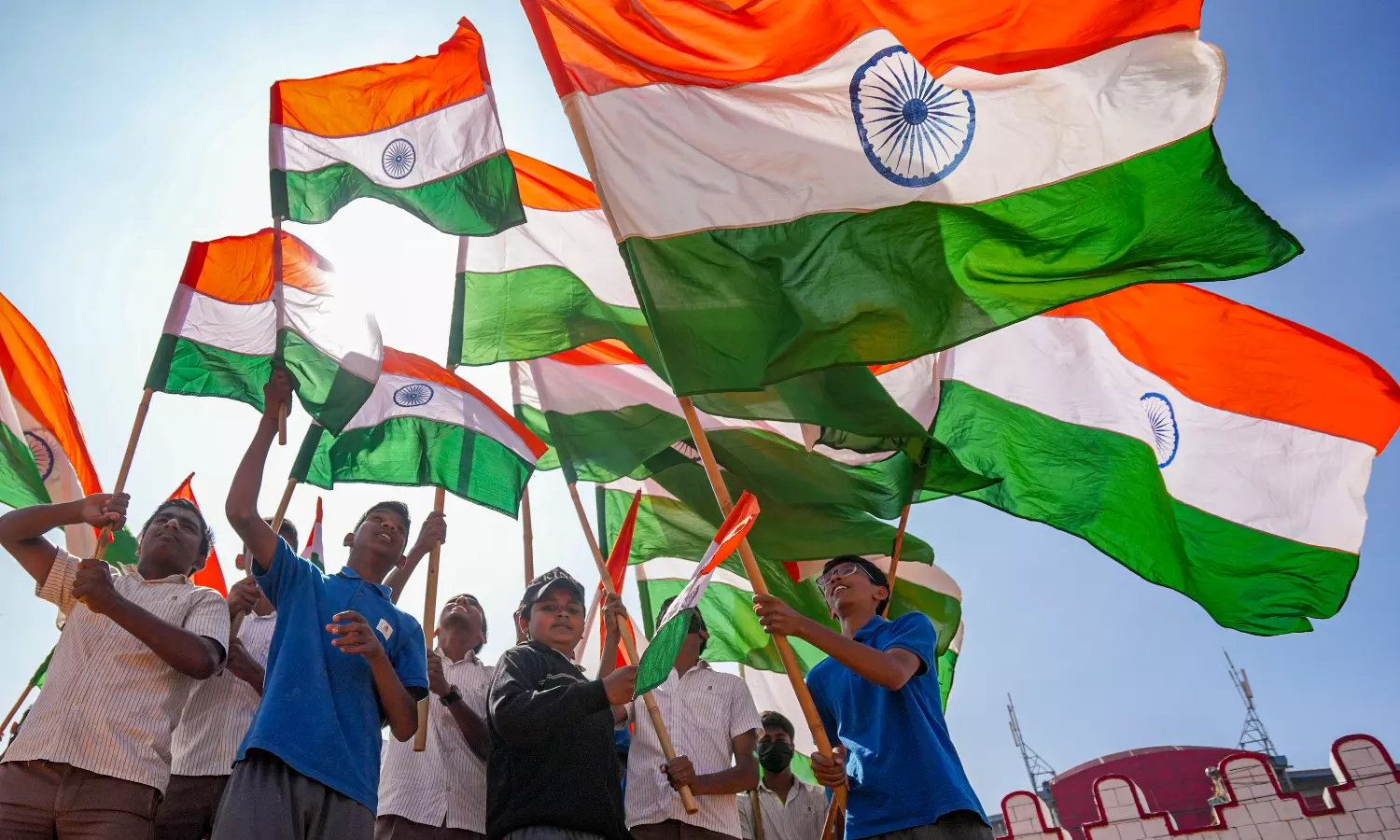AA Edit | Constitution India's moral compass as Republic is 75
India celebrates its 76th Republic Day, embracing diversity and enduring constitutional strength;

The Indian Republic, soon to celebrate in a grand way its 76th Republic Day, is alive and kicking. Reports of its demise have been vastly exaggerated. The day the Constitution of India came into effect on January 26, 1950 — on the repeal of the colonial era Government of India Act of 1935 — the nation shed its British yoke and went forth bravely into a new world as a sovereign, democratic Republic and is now the world’s most populous democracy.
The parade of culture, military might, economic clout and India’s diversity will have an extra zing to it Sunday when the cavalcade wends its way down the historic Kartavya Path. For, remarkably, and despite the stresses and strains of the need to transform across eras of change and progress, the Indian Republic and its Constitution, a living breathing document, have held up well enough.
It is pure political theatre that netas go around with a copy of the Constitution in their hand or pocket. Whatever be the challenges that the historic document faced in its amendments fulfilling a need to keep up with the times and despite the misuse of some of its provisions by the Union government in a Union of states, it has stood up to the challenges well. There is nothing in the air to suggest the Constitution of the Indian Republic is under threat, including from the saffronisation of politics; after all, it did survive the time when its Article 356 was frequently misused.
Beyond the Constitution and its hallowed place in modern Indian history, it is the economic development over the last few decades, say since 1991, as India transitioned from an agrarian economy to become the world’s fifth largest economy with a strong industrial and vibrant service sector, that has brought for India a higher place in the reckoning of many of the world’s top economic and military powers.
It is again remarkable that the Constitution has not been affected by the polarisation of the Indian polity, which represents a fractured base of voters torn between a swing to the right from earlier socialist moorings which, however, may have become less relevant with the times. Of course, it is not a great reflection on the economy that as many as 800 million people should require to be given subsidised subsistence food grains.
The inequalities may be showing more and more as time advances with India’s technological progress, especially in IT and space exploration, not quite balancing the fact that the poor have gradually got poorer. And yet the Constitution has sustained its guarantee of fundamental rights to all its citizens, fostering justice, if not quite equality in economic terms.
Who would have believed when the Constituent Assembly met over nearly three years to draft the Constitution, this mosaic of cultures, languages, and traditions would sport an ability to embrace diversity while fostering a sense of unity? There will be challenges to this ideal state, maybe even in the One Nation One Poll concept and in the thrusting of Hindi as a working language across the nation.
The beauty is India has survived everything and more; standing up to challenges, including that of the Emergency imposed foolishly in challenging the majesty of the Constitution, to be where it is with an aspiration to do even better in literacy, education and public health. Through all these years, the Indian Constitution has been India’s moral compass.

